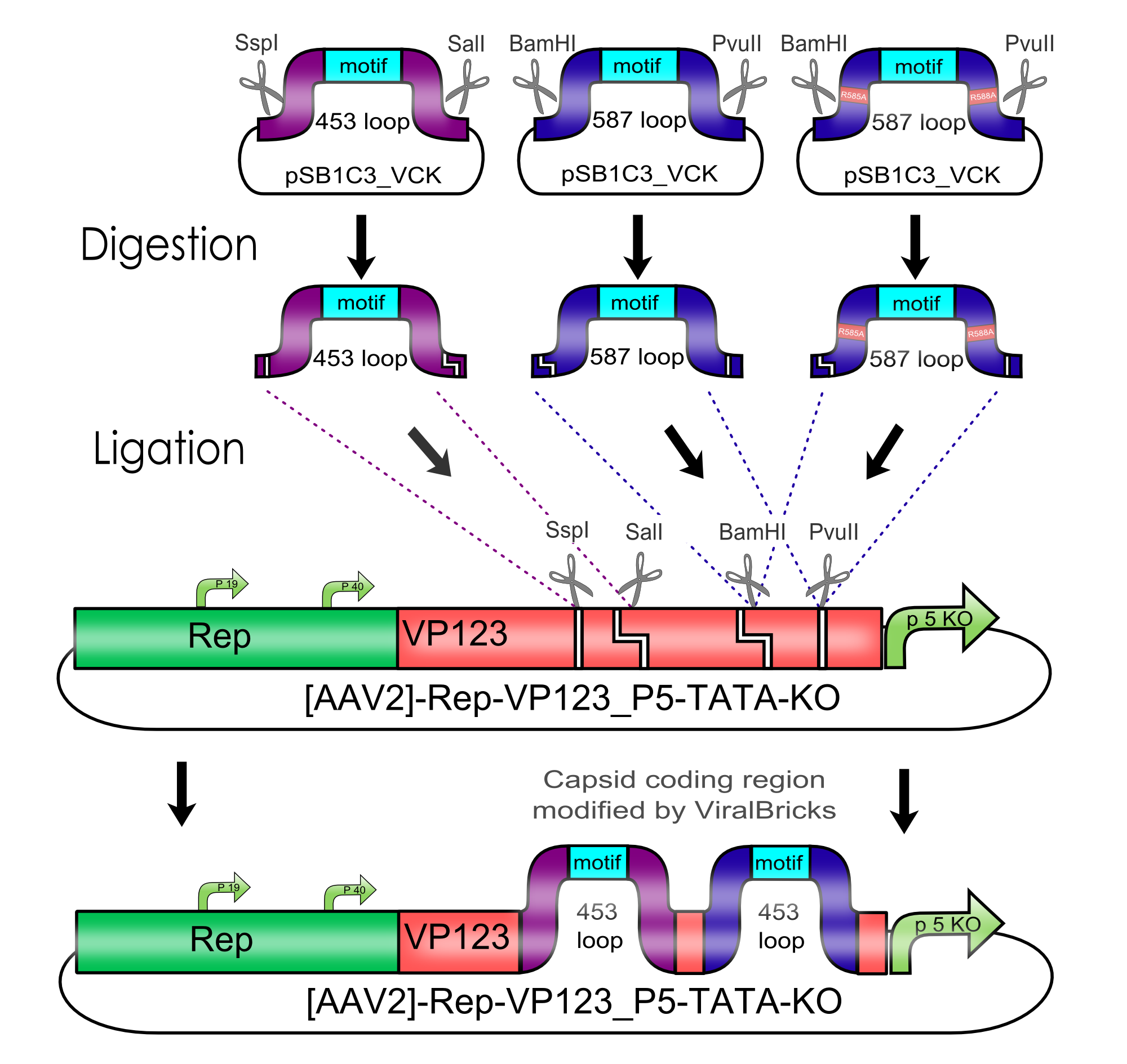Team:Freiburg Bioware/Project/Project Description
From 2010.igem.org
VolkerMorath (Talk | contribs) |
VolkerMorath (Talk | contribs) |
||
| Line 7: | Line 7: | ||
<div style="float:left; width:460px; height:auto; margin: 0px 5px 0px 5px; text-align:justify;border: 1px solid black;"><p> | <div style="float:left; width:460px; height:auto; margin: 0px 5px 0px 5px; text-align:justify;border: 1px solid black;"><p> | ||
Therapy using viral vectors is an promising approach for.... | Therapy using viral vectors is an promising approach for.... | ||
| - | In an first step the plasmids of the AAV-2 Helper-free System were genetically modifyed by converting it into BioBricks and inserting of targeting molecules into the constructs. These plasmids were then used to transfect the producer cell line AAV-293. After an incubation of three days the viral vectors were harvested and used to transduce different target cells. The succesful transduction can then for example be measured by detecting the fluorescence of fluorescent proteins in the target cells. | + | In an first step the plasmids of the AAV-2 Helper-free System were genetically modifyed by converting it into BioBricks and inserting of targeting molecules into the constructs. These plasmids were then used to transfect the producer cell line AAV-293. After an incubation of three days the viral vectors were harvested and used to transduce different target cells. The succesful transduction can then for example be measured by detecting the fluorescence of fluorescent proteins in the target cells.<br><br> |
| + | The majority of the modifications that were introduced into the viral vector aimed to allow differential targeting of tumor cell over healthy off-target cells. | ||
</p></div> | </p></div> | ||
<div style="float:right; width:420px; height:auto; "><img src="https://static.igem.org/mediawiki/2010/3/38/Freiburg10_Experimental_System.png" width="420" | <div style="float:right; width:420px; height:auto; "><img src="https://static.igem.org/mediawiki/2010/3/38/Freiburg10_Experimental_System.png" width="420" | ||
Revision as of 18:39, 24 October 2010
The Experimental System
Therapy using viral vectors is an promising approach for....
In an first step the plasmids of the AAV-2 Helper-free System were genetically modifyed by converting it into BioBricks and inserting of targeting molecules into the constructs. These plasmids were then used to transfect the producer cell line AAV-293. After an incubation of three days the viral vectors were harvested and used to transduce different target cells. The succesful transduction can then for example be measured by detecting the fluorescence of fluorescent proteins in the target cells.
The majority of the modifications that were introduced into the viral vector aimed to allow differential targeting of tumor cell over healthy off-target cells.

Modularization of the rAAV genome
Text
Modulatization of the RepCap plasmid
Text
Modulatization of the Vectorplasmid
Text

Modification of the viral surface in one cloning step - The ViralBrick standard
Text

Midifications of the Virus Shell via Loop Insertions
Text
Specific biotinylation of the Viral Schell - The Biotinylation Acceptor Peptide (BAP)
Text
Purification of Therapeutic Viral Vectors - The His-Affinity Tag
Text
Targeting of integrin overexpressing cells - The RGD Motif
Text
Arming the Viral Vector with therapeutic antibodies - The Z34C Motif
Text
Testing the limit for loop insertion - The Beta-Lactamase
Text
Method Development
Text
Arming: Killing the Tumor
Text
All-In-One: Testing multiple modified Viral Vectors
Text
Virus Construction Kit - The Manual
Text










 "
"